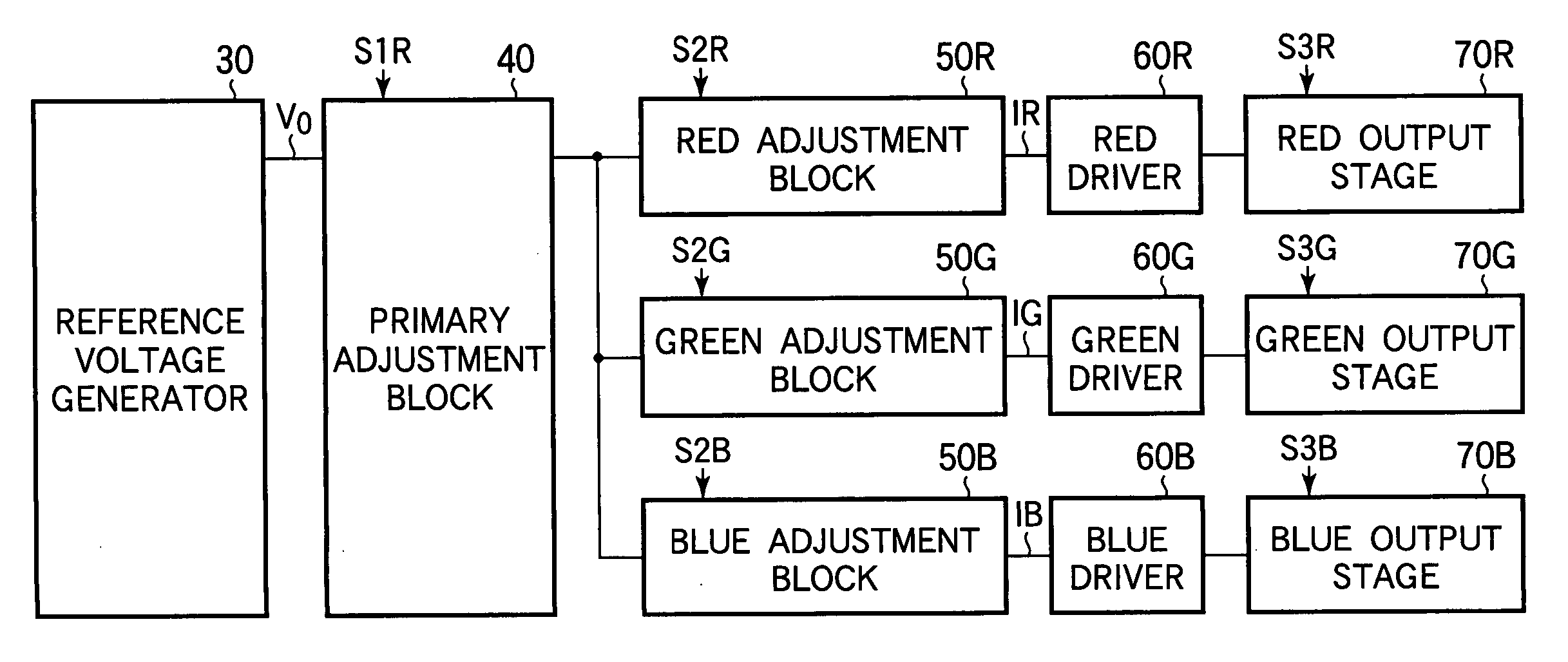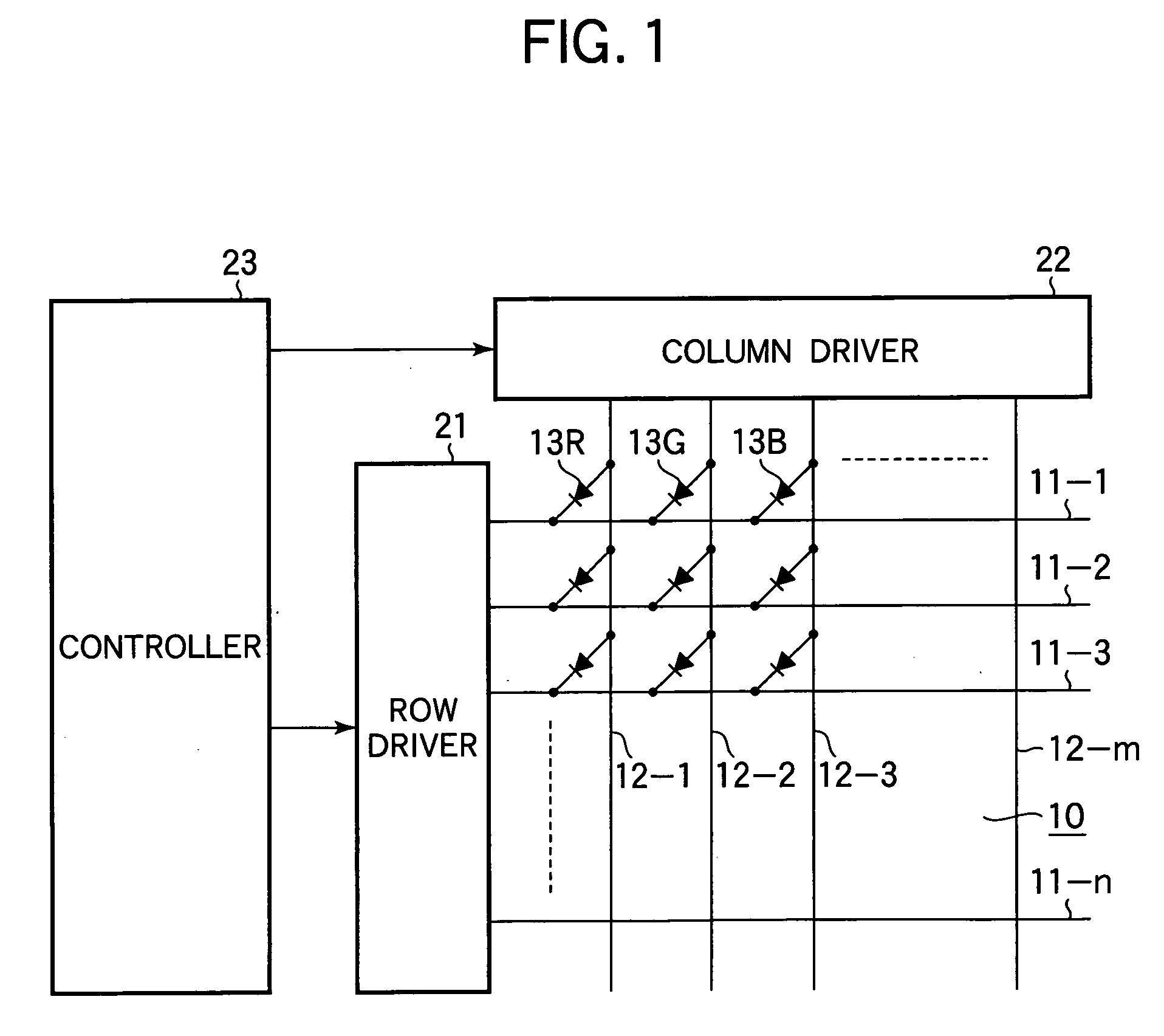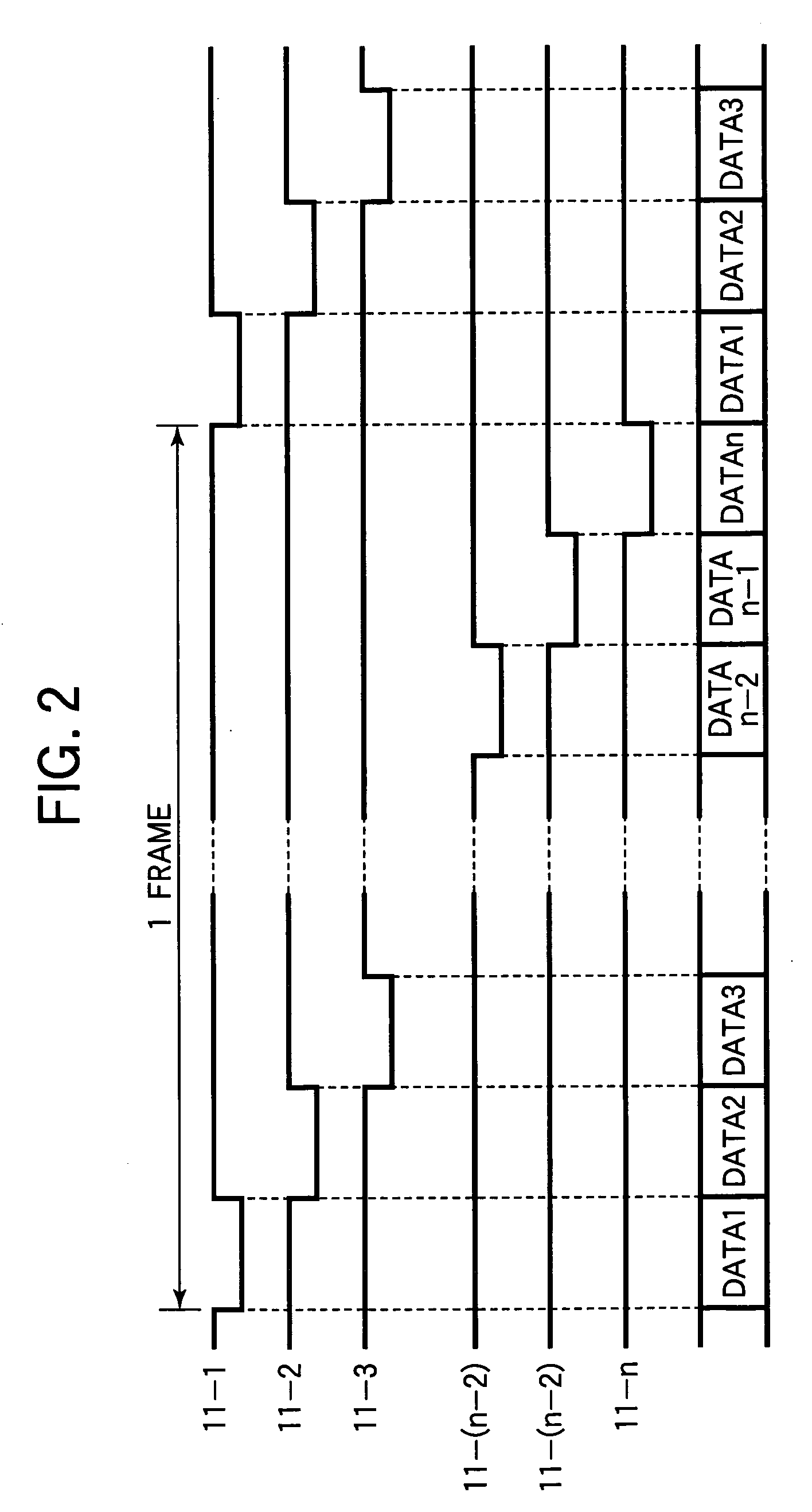Color balancing circuit for a display panel
a color balancing and display panel technology, applied in static indicating devices, auxillary members of forms/shuttering/falseworks, instruments, etc., can solve the problems of not providing a single convenient adjustment of overall image brightness, separate adjustment circuitry for each color, and inability to provide brightness adjustment. brightness adjustment and color balancing
- Summary
- Abstract
- Description
- Claims
- Application Information
AI Technical Summary
Benefits of technology
Problems solved by technology
Method used
Image
Examples
first embodiment
[0030] The first embodiment is employed in a display panel such as a passive matrix organic EL panel having the structure shown schematically in FIG. 1. This organic EL panel has a panel surface 10 for display of an image. A plurality of row electrodes 11-1 to 11-n extend in the row direction and a plurality of column electrodes 12-1 to 12-m extend in the column direction on the panel surface 10, where m and n are arbitrary positive integers, m being divisible by three. EL elements 13R that emit red light, EL elements 13G that emit green light, and EL elements 13B that emit blue light are disposed at the intersections of the row and column electrodes to form an n×m matrix. A triplet of EL elements 13R, 13G, and 13B constitutes a single picture element or pixel. The display surface includes a large number of these pixels.
[0031] A row driver 21 is connected to the row electrodes 11-1 to 11-n; a column driver 22 is connected to the column electrodes 12-1 to 12-m. The row driver 21 has...
second embodiment
[0047] The second embodiment is a specific instance of the first embodiment, and has the general configuration shown in FIG. 3.
[0048] Referring to FIG. 4, in the second embodiment, the reference voltage generator 30 in FIG. 3 includes a power supply 31 such as a battery that supplies the reference voltage V0 to the primary adjustment block 40. The primary adjustment block 40 includes a voltage divider 41 that divides the reference voltage V0 to obtain a plurality of divided voltages, a selector 42 that selects one desired divided voltage V1 from among the divided voltages according to the brightness adjustment signal S1, and a converter circuit that generates the constant primary current I according to the selected divided voltage V1.
[0049] The voltage divider 41 has i resistors 41-1 to 41-i that divide the reference voltage V0, where i is a positive integer greater than one. The resistors 41-1 to 41-i are connected in series between the power supply 31 and ground, and output i di...
third embodiment
[0068] The third embodiment is another specific instance of the first embodiment, and has the general configuration shown in FIG. 3.
[0069] Referring to FIG. 6, the third embodiment differs from the second embodiment by replacing PMOS transistor 45 in the color balancing circuit in FIG. 4 with a PMOS transistor 145 having different characteristics, and replacing the red, green, and blue adjustment blocks 80R, 80G, and 80B with red, green, and blue adjustment blocks 180R, 180G, and 180B having different circuit configurations. PMOS transistor 145 has a channel width W=a, and a channel length L=b, where the channel size parameters (a and b) have arbitrary values.
[0070]FIG. 7 shows the circuit configuration of the red adjustment block 180R in FIG. 6. The circuit configurations of the green and blue adjustment blocks 180G and 180B are identical to the circuit configuration of the red adjustment block 180R. The red adjustment block 180R differs from the red adjustment block 80R in the s...
PUM
 Login to View More
Login to View More Abstract
Description
Claims
Application Information
 Login to View More
Login to View More - R&D
- Intellectual Property
- Life Sciences
- Materials
- Tech Scout
- Unparalleled Data Quality
- Higher Quality Content
- 60% Fewer Hallucinations
Browse by: Latest US Patents, China's latest patents, Technical Efficacy Thesaurus, Application Domain, Technology Topic, Popular Technical Reports.
© 2025 PatSnap. All rights reserved.Legal|Privacy policy|Modern Slavery Act Transparency Statement|Sitemap|About US| Contact US: help@patsnap.com



